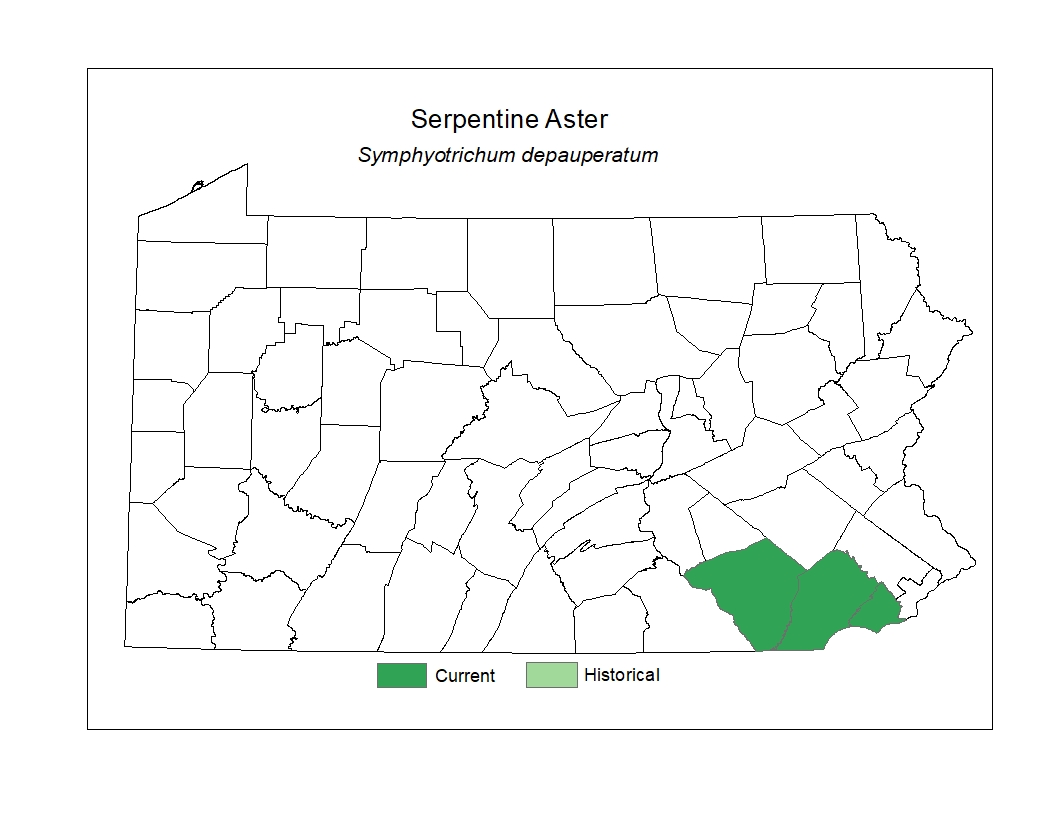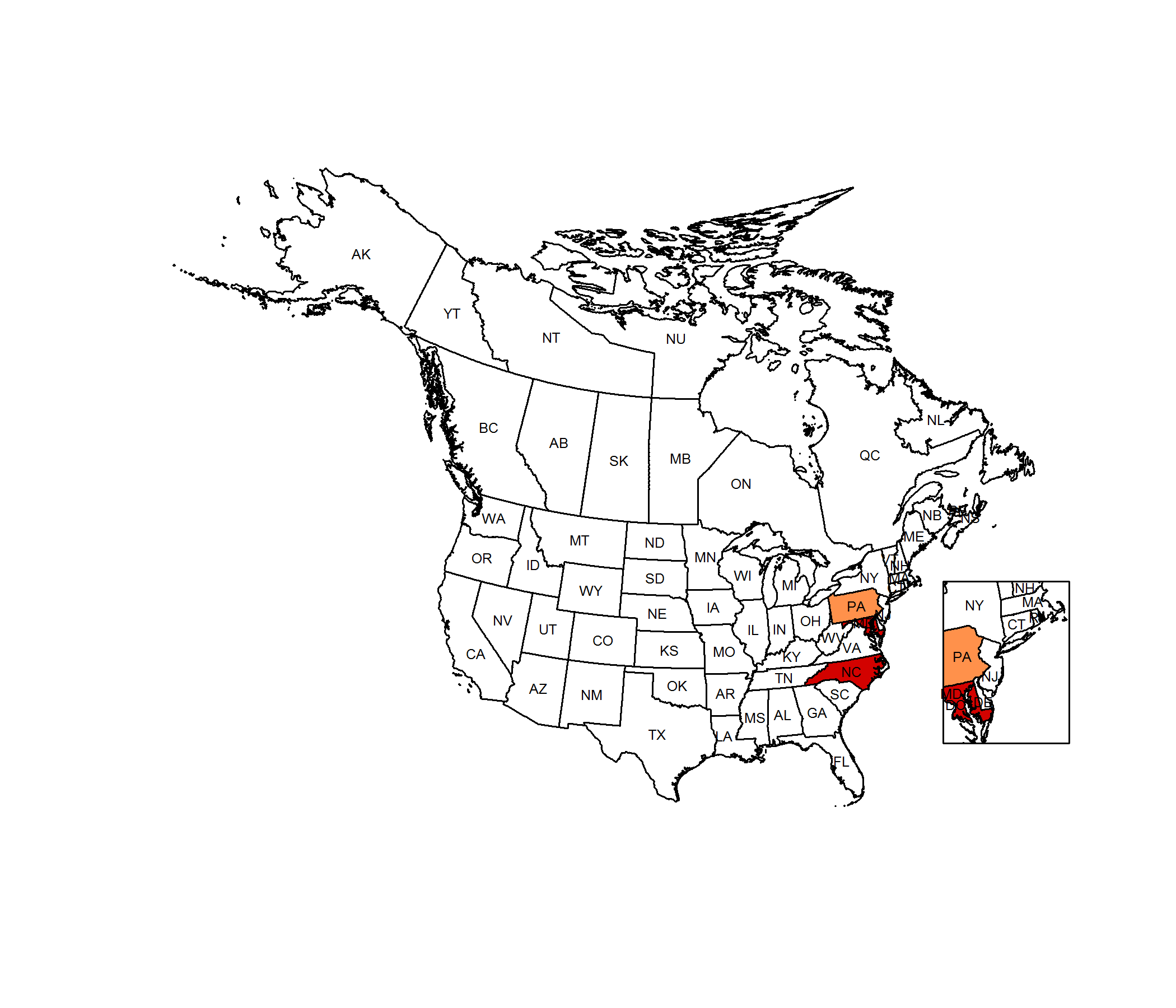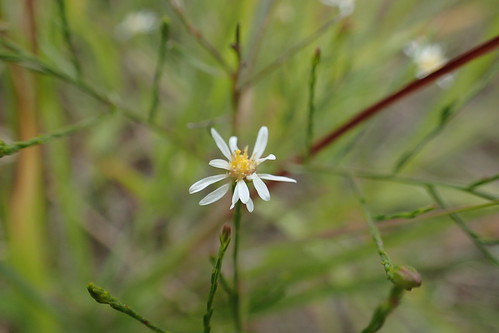 Species Factsheets
Species Factsheets
Symphyotrichum depauperatum
Serpentine Aster
State Status: Pennsylvania Threatened (PT)
PBS Status: Pennsylvania Threatened (PT)
Federal Status:
Global Rank: G2
![]() rank interpretation
rank interpretation
State Rank: S2
Did You Know?
All populations of this species are found in serpentine barrens, except for an occurrence on a diabase glade in North Carolina.
Description
Serpentine aster (Symphyotrichum depauperatum) flowers have daisy-like composite heads. What looks like a simple flower is actually a cluster of short white ray flowers surrounding a central disk of tiny tubular flowers. The slender, wiry, 30cm stems are branched and smooth. The leaves are variable in shape and size and usually dry up before the flowers open.
Rank Justification
Imperiled in the nation or state because of rarity due to very restricted range, very few populations (often 20 or fewer), steep declines, or other factors making it very vulnerable to extirpation from the nation or state.
Habitat
Serpentine barrens are a unique habitat type, locally found in parts of Chester, Delaware and Lancaster counties in Pennsylvania and Cecil County, Maryland.
Survey Dates
Flowers August - October
Distribution
Chester, Delaware and Lancaster counties in Pennsylvania and Cecil County, Maryland.

Threats
Of the sixteen known serpentine aster populations, only five are adequately protected. In the mid-1800s magnesite was mined from serpentine barrens for the production of epsom salt. Serpentine has also been used as road base material. Quarrying, housing and industrial development continue to jeopardize the eleven remaining sites.
Management
Serpentine aster is listed as a candidate for federal protection by the USF&WS. One plant site, partly owned by The Nature Conservancy, is managed by the Bureau of Forestry as a State Forest Natural Area. A second is owned by Tyler Arboretum, and a third is managed as a county park. Landowner agreements are being pursued for protecting two other sites. State permit review should help protect other sites threatened by development.
Conservation Status Map


NatureServe. 2017. NatureServe Explorer: An online encyclopedia of life [web application]. Version 7.1. NatureServe, Arlington, Virginia. Available https://explorer.natureserve.org.
https://bwwellsassociation.wordpress.com/2015/11/05/north-carolinas-rare-serpentine-aster-symphyotrichum-depauperatum/
- NatureServe. 2018. NatureServe Explorer: An online encyclopedia of life [web application]. Version 7.1. NatureServe, Arlington, Virginia. Available at https://www.natureserve.org/explorer
- Pennsylvania Natural Heritage Program. 2018.
- Rhoads, A.F. and W.M. Klein, Jr. 1993. The Vascular Flora of Pennsylvania. American Philosophical Society, Philadelphia, Pennsylvania. Rhoads, A.F. and T.A. Block.
- 2007. The Plants of Pennsylvania: An Illustrated Manual. 2nd edition. University of Pennsylvania Press, Philadelphia, Pennsylvania.







